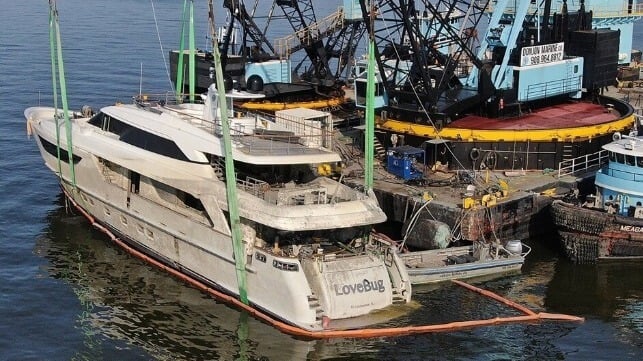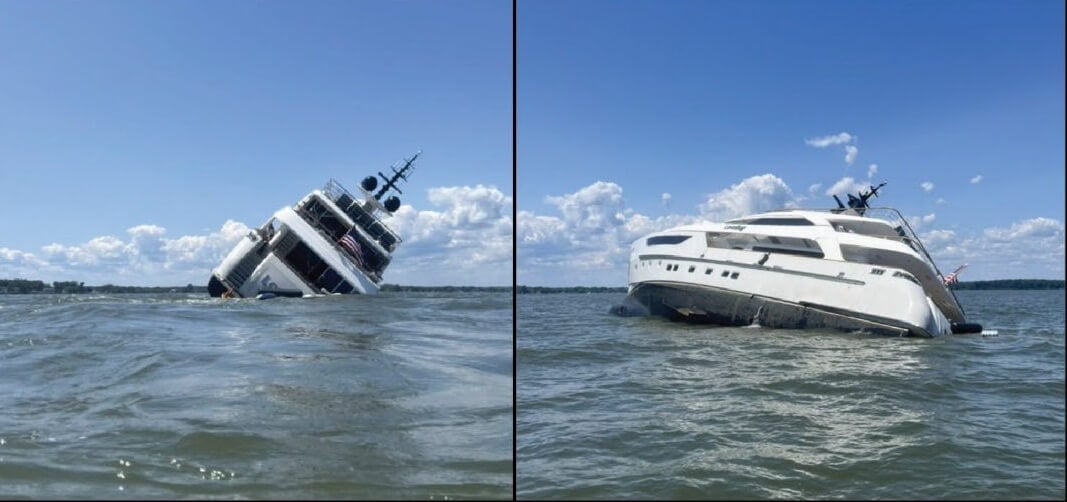Open Hatch Likely Caused Sinking of 122-Foot Yacht in Chesapeake Bay

A pair of partially-open aft hatches likely caused the flooding and sinking of the yacht Lovebug on the Chesapeake Bay last year, according to the NTSB.
On the afternoon of July 27, 2024, the 122-foot Lovebug was under way on Chesapeake Bay near Shady Side, Maryland, making about 7-10 knots. At about 1235 hours, the yacht took on a heavy list to starboard. The captain was concerned by the worsening list and checked the stabilizers, rudder indicators and steering, without finding any technical issues. After about one minute, the vessel lost auxiliary power and the captain slowed to four knots. He ordered preparations to drop anchor, but before the crew could carry out the order, the list became so worrisome that the master ordered abandon ship. Three crewmembers and one owner went over the side, followed by the master, and Lovebug partially sank in about 12 feet of water.
One person sustained a minor injury, and minor oil pollution was observed around the vessel. The yacht was salvaged after two weeks, but the water damage to the vessel's interior was estimated at about $8 million.

Courtesy NTSB
During the salvage process, divers inspected the vessel. They found that the exterior clamshell hatch for the "garage" - the aftmost compartment, used for storage of water toys - was partially open. The watertight door from the garage to the engine room was also open. After salvage and transport to a shipyard, no hull damage or other visible breaches were found, though the interior was so filled with debris that a full inspection was impossible.
The master told investigators that he had seen the garage's clamshell hatch fully closed before getting under way. No one aboard the vessel saw the flooding happen before abandoning ship.
NTSB concluded that the Lovebug likely took on water through her garage, where the lower edge of the hatch is near the waterline, followed by flooding through the open engine room watertight hatch. As water accumulated in the garage space, her draft would have increased aft, leading to engine room flooding if the water rose above the sill of the open watertight door. The vessel's stability decreased with flooding, and her list reached an equilibrium of about 45-50 degrees to starboard, which stayed constant as she sank into the muddy bottom, NTSB concluded.
